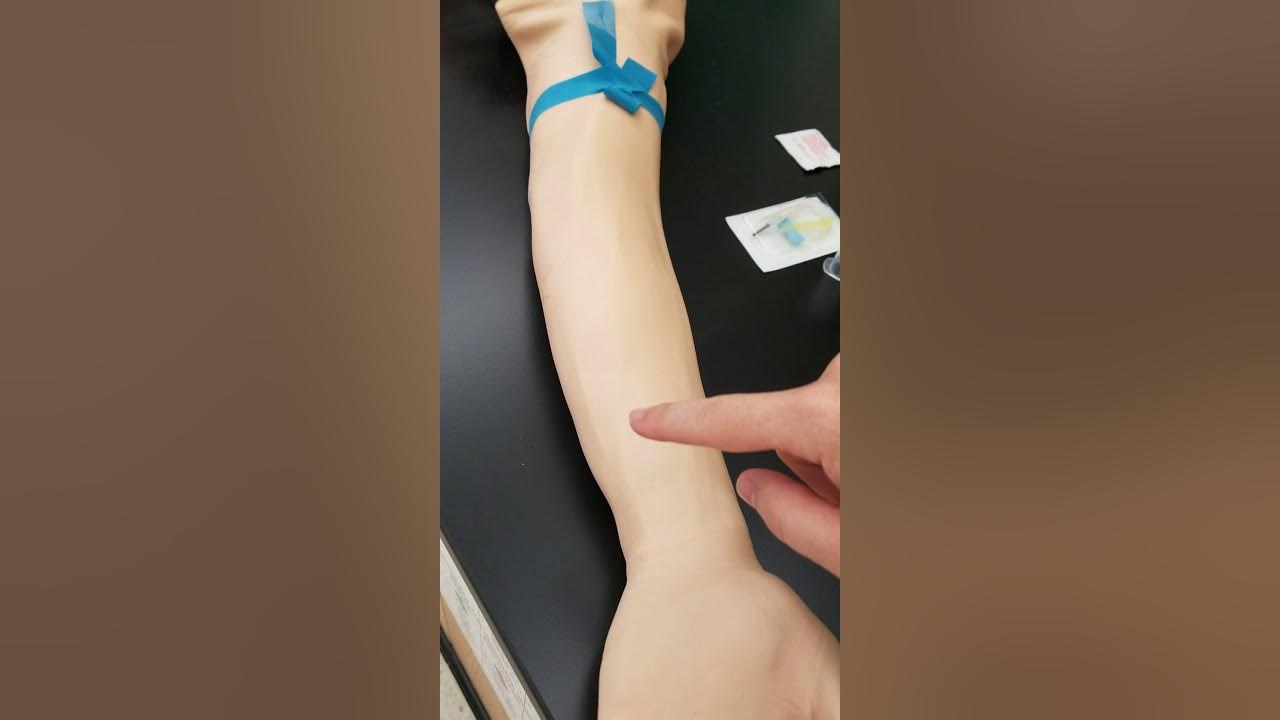Phlebotomy: The Order of Veins
Summary
TLDRThis video provides a detailed guide for phlebotomists on the proper order of veins to inspect when drawing blood. The median cubital vein should be the first choice, followed by the cephalic and basilic veins. The basilic vein is considered a last resort due to its proximity to the brachial artery and nerves. If none of these veins are accessible, the back of the hand or wrist veins can be used. The script also emphasizes that forearm and wrist veins are to be avoided, and foot veins require MD approval. The key takeaway is to prioritize safety and follow the standard vein order to minimize risks.
Takeaways
- 😀 The median cubital vein is the first choice for venipuncture when inspecting the arm.
- 😀 If the median cubital vein is not accessible, the second option is the cephalic vein.
- 😀 The basilic vein should be considered as a last resort due to its proximity to the brachial artery and nerves.
- 😀 In cases where all arm veins are inaccessible, dorsal metacarpal veins on the back of the hand can be considered for venipuncture.
- 😀 There is no specific order for selecting veins in the back of the hand; choose whichever vein feels most accessible.
- 😀 The antecubital fossa area is the preferred location for finding the median cubital, cephalic, and basilic veins.
- 😀 If the basilic vein is used, be cautious of potential nerve damage and arterial puncture risks.
- 😀 Do not perform venipuncture in the forearm or inside the wrist area as it is against the standard of care.
- 😀 In extremely rare cases where no veins are accessible in the arm or hand, a foot venipuncture can be performed with MD approval.
- 😀 Always follow the proper order of veins to avoid complications, starting with the median cubital, followed by the cephalic, and lastly the basilic vein.
Q & A
What is the order of veins to follow when performing venipuncture?
-The recommended order of veins to follow when performing venipuncture is: 1) Median cubital vein (first choice), 2) Cephalic vein (second choice), 3) Basilic vein (last resort). If none of these veins are accessible, the dorsal metacarpal veins on the back of the hand should be considered.
Why is the median cubital vein considered the primary choice for venipuncture?
-The median cubital vein is the primary choice for venipuncture because it is typically the largest and easiest to locate. It is located in the antecubital fossa, where the most accessible veins lie.
What should be done if the median cubital vein is not accessible?
-If the median cubital vein is not accessible, the cephalic vein should be considered next. If the cephalic vein is also not accessible, the basilic vein is the last resort.
Why is the basilic vein considered a last resort for venipuncture?
-The basilic vein is considered a last resort because it is located near the brachial artery, which increases the risk of puncturing the artery and causing internal bleeding. Additionally, nerves run parallel to the basilic vein, and accidental puncturing could cause nerve damage.
What should be avoided during venipuncture in the basilic vein area?
-Venipuncture in the basilic vein area should be avoided because it is close to the brachial artery, which can lead to arterial puncture and internal bleeding. Additionally, there are nerves near the basilic vein that, if damaged, could cause nerve injuries.
What is the procedure when all veins in the arm are inaccessible?
-When no veins are accessible in the arm, the next option is to inspect the back of the hand for the dorsal metacarpal veins. There is no specific order for veins in the back of the hand, so the practitioner can choose any vein they feel comfortable with.
Is it acceptable to perform venipuncture in the forearm or inside the wrist?
-No, it is against the standard of care to perform venipuncture in the forearm or the inside of the wrist. These areas should be avoided entirely.
What should be done if veins are not accessible in the arms or hands?
-If veins are not accessible in the arms or hands, a foot venipuncture may be considered, but only with approval from a medical doctor (MD).
What are dorsal metacarpal veins, and when should they be used?
-Dorsal metacarpal veins are located on the back of the hand. There is no specific order for using these veins, and practitioners can choose the vein they are most comfortable with when performing venipuncture in this area.
What is the importance of avoiding the basilic vein during venipuncture?
-The basilic vein should be avoided due to its proximity to the brachial artery and nerves. Puncturing the artery can lead to serious complications, including internal bleeding, and damaging nerves can cause long-term harm. Therefore, it should be used only as a last resort.
Outlines

This section is available to paid users only. Please upgrade to access this part.
Upgrade NowMindmap

This section is available to paid users only. Please upgrade to access this part.
Upgrade NowKeywords

This section is available to paid users only. Please upgrade to access this part.
Upgrade NowHighlights

This section is available to paid users only. Please upgrade to access this part.
Upgrade NowTranscripts

This section is available to paid users only. Please upgrade to access this part.
Upgrade Now5.0 / 5 (0 votes)





